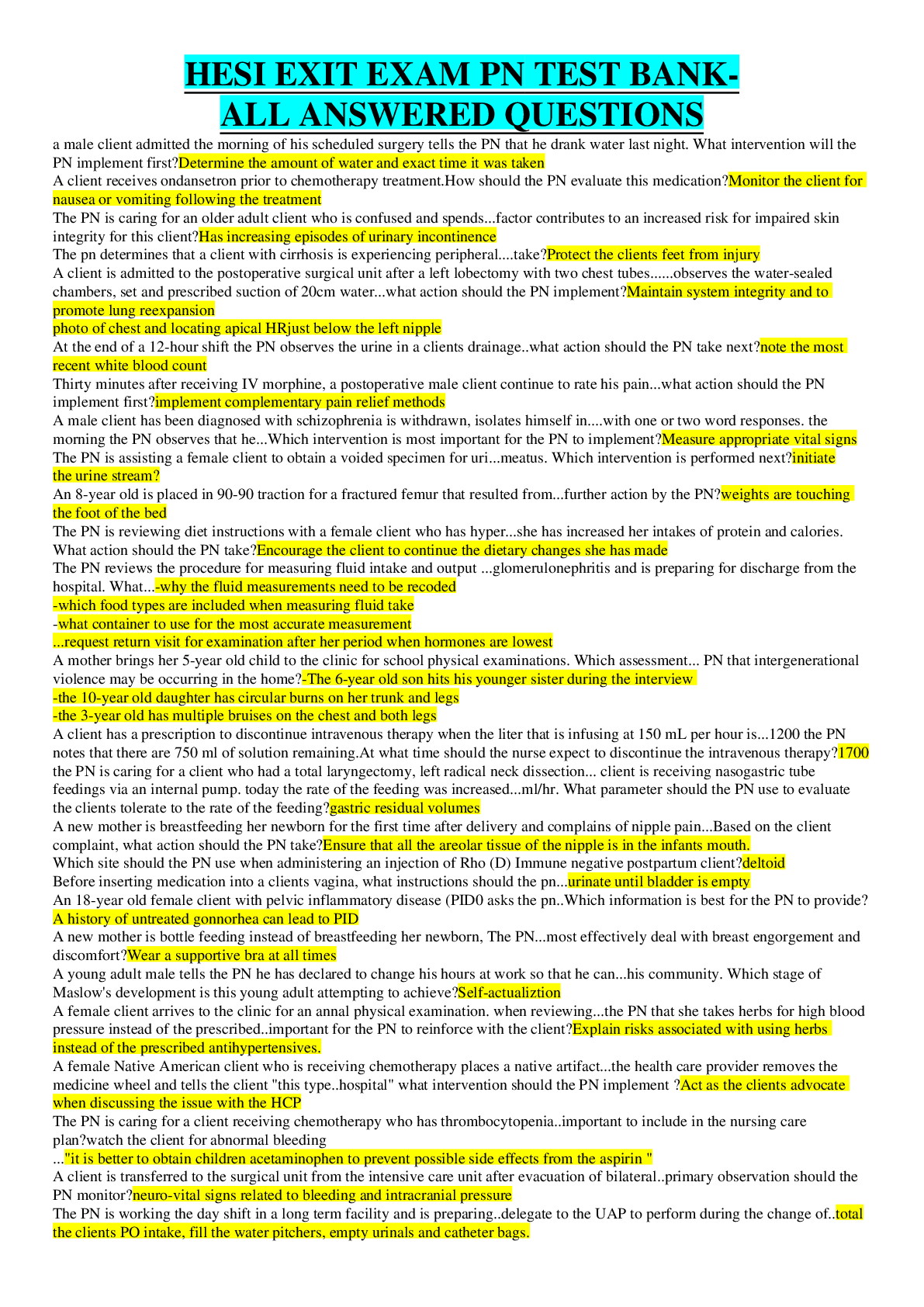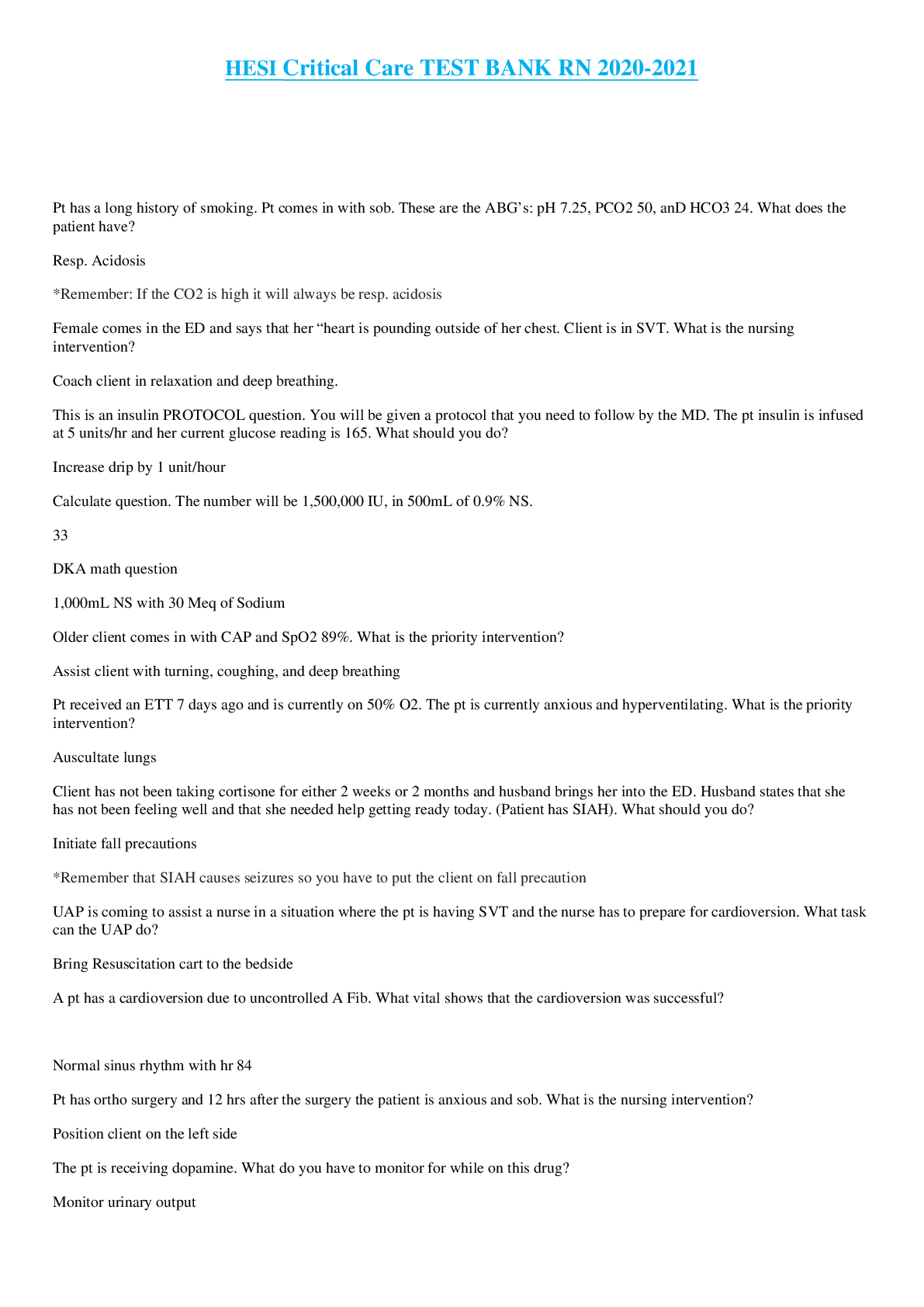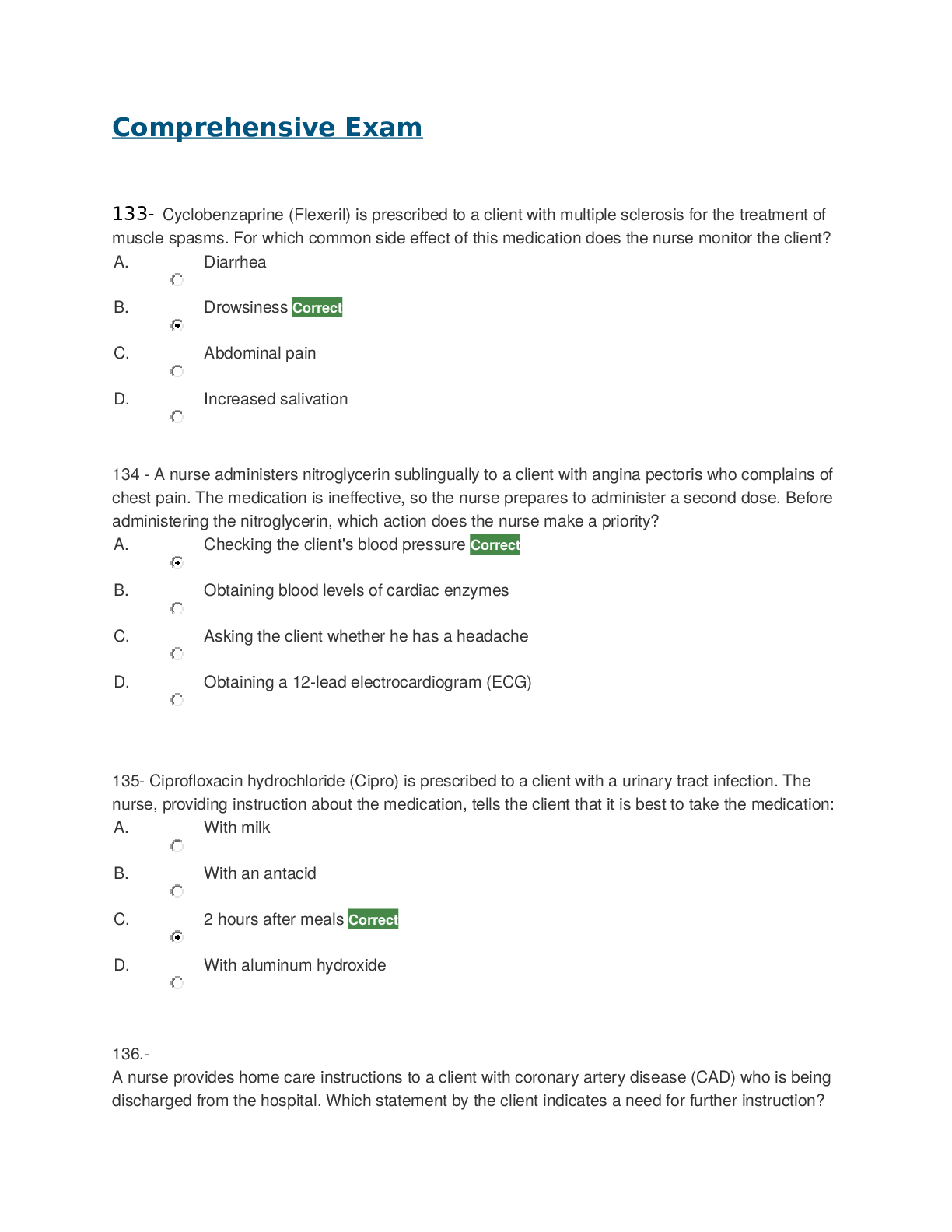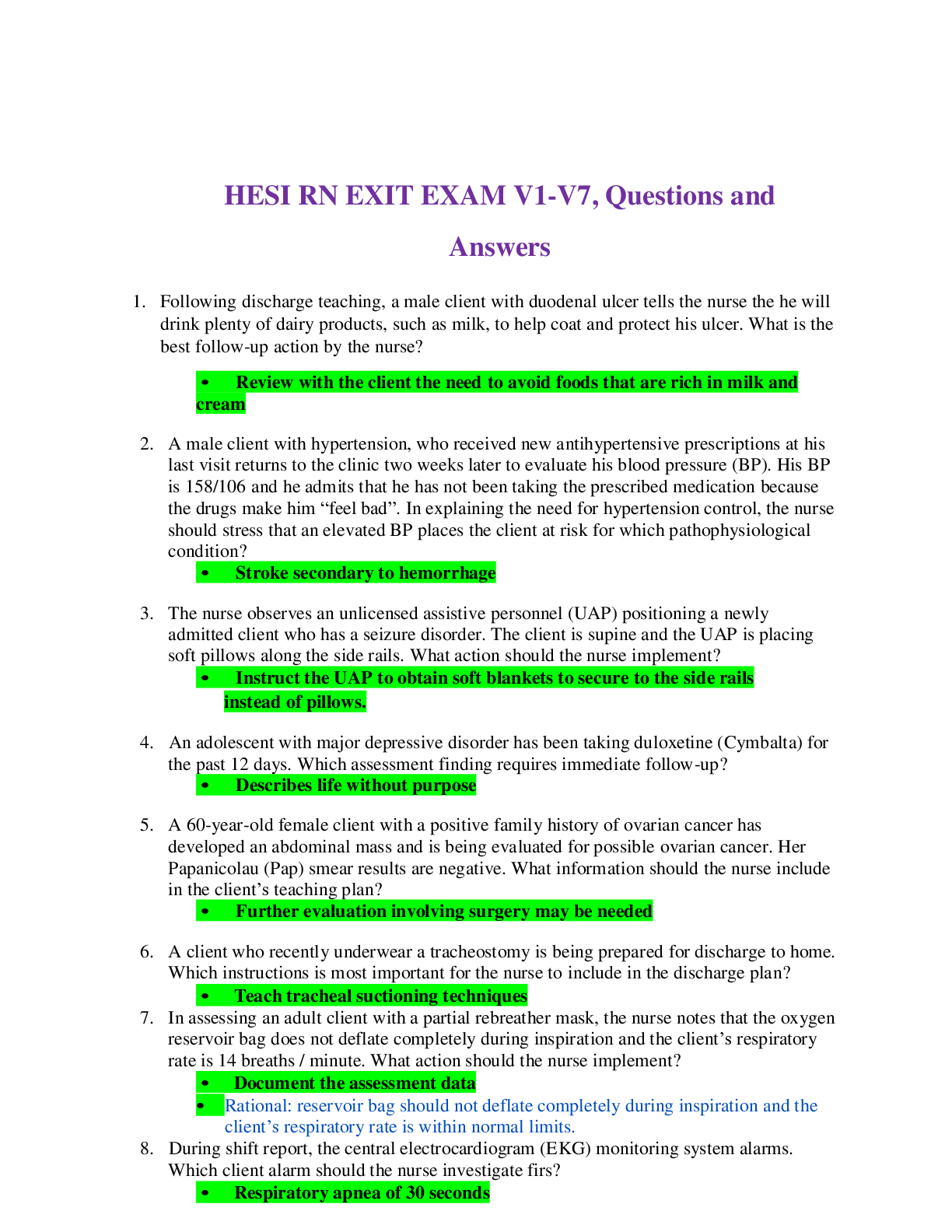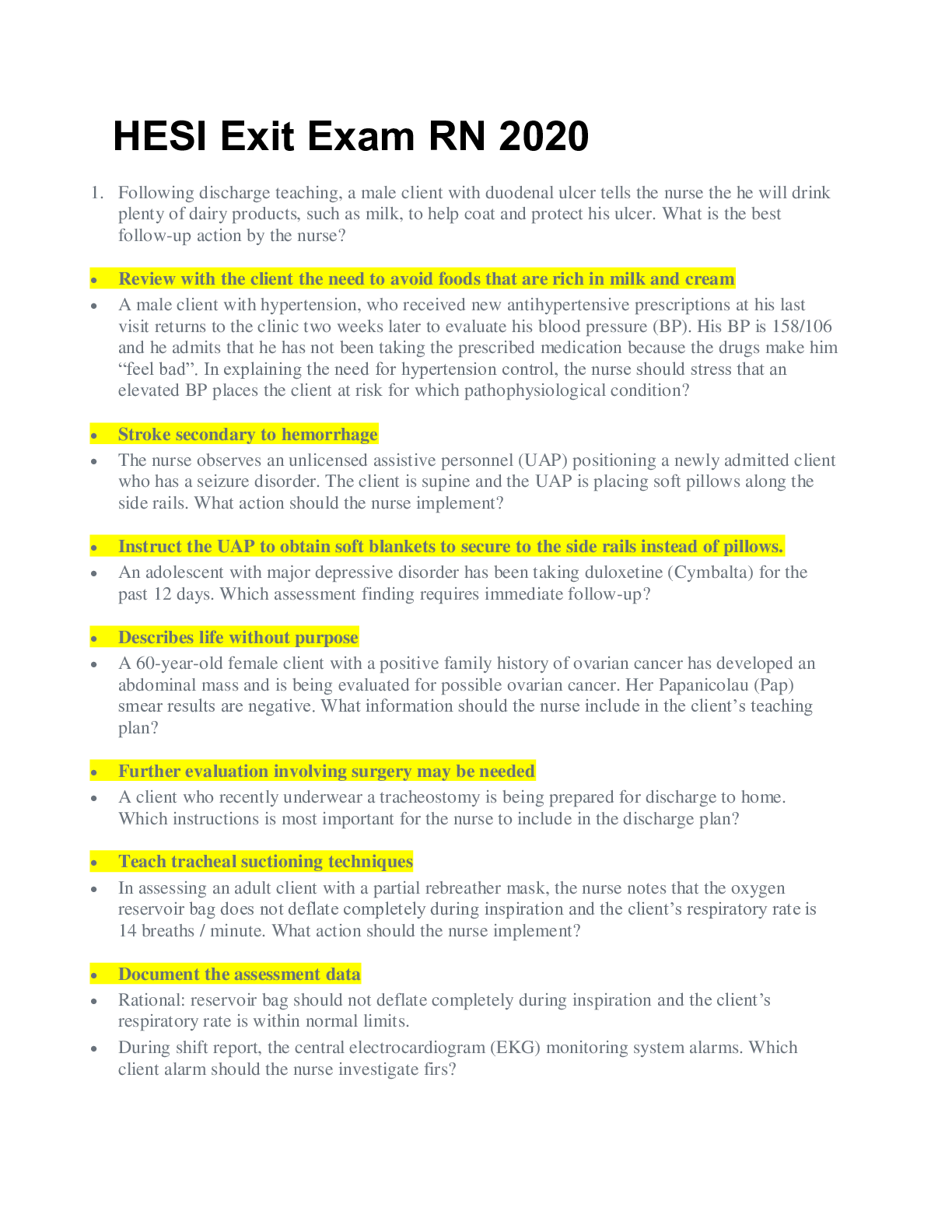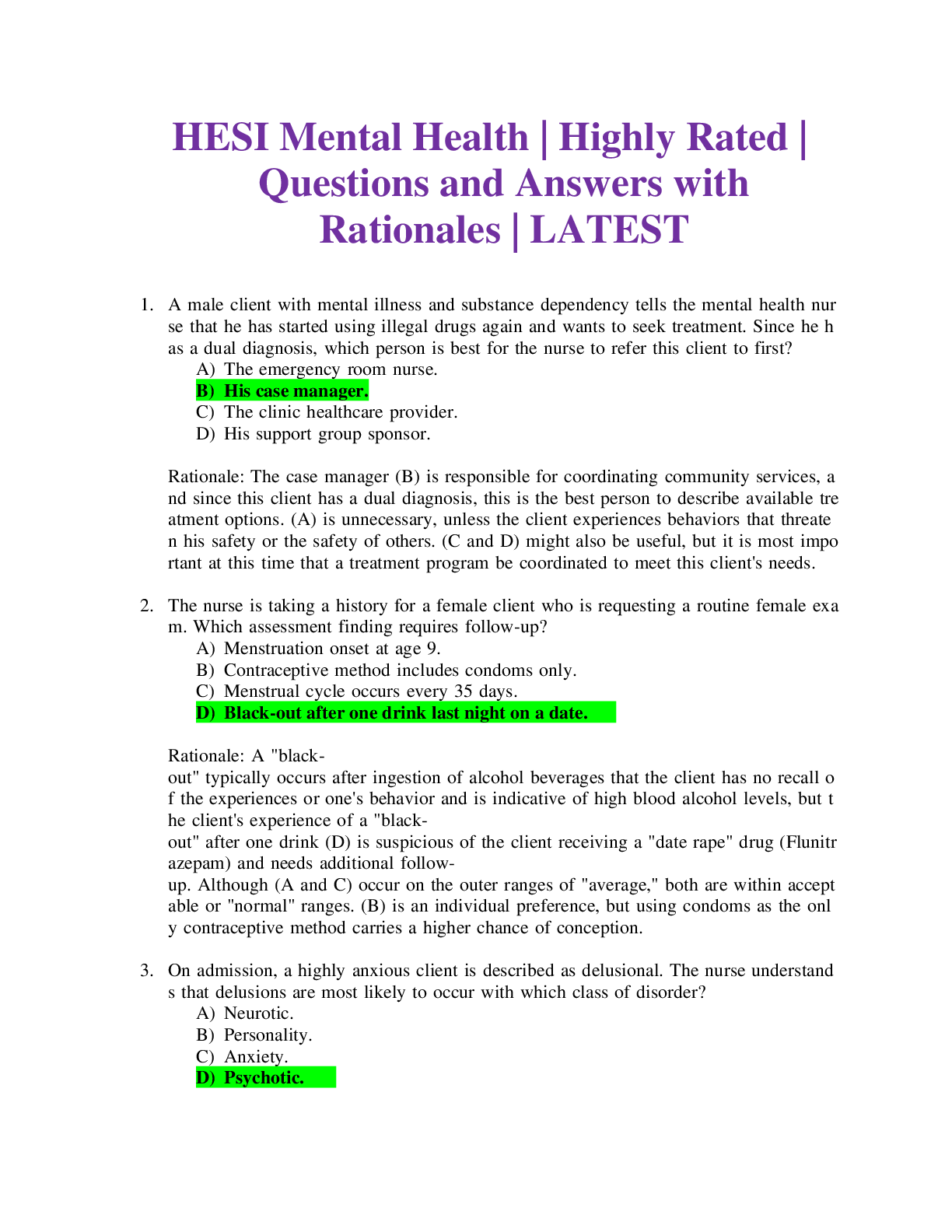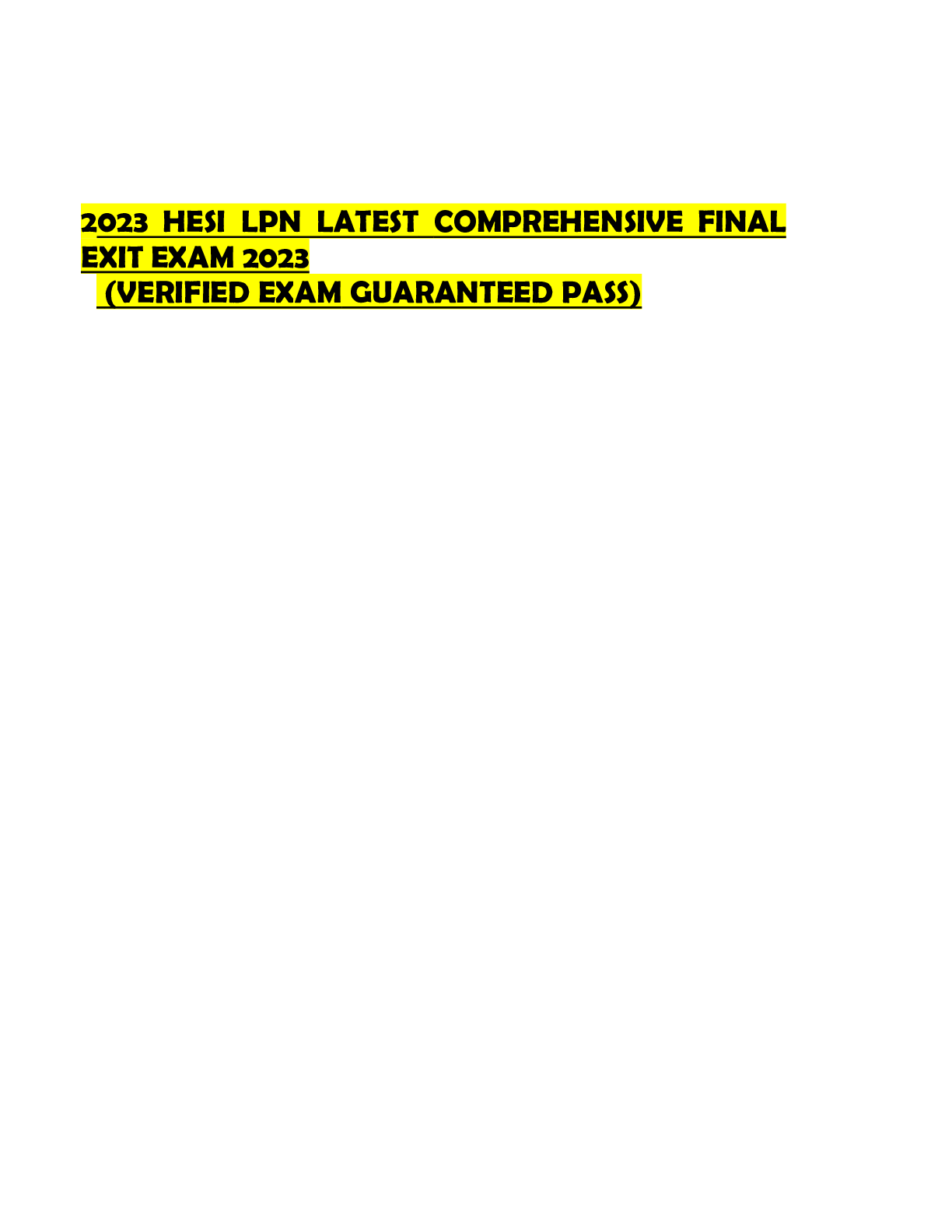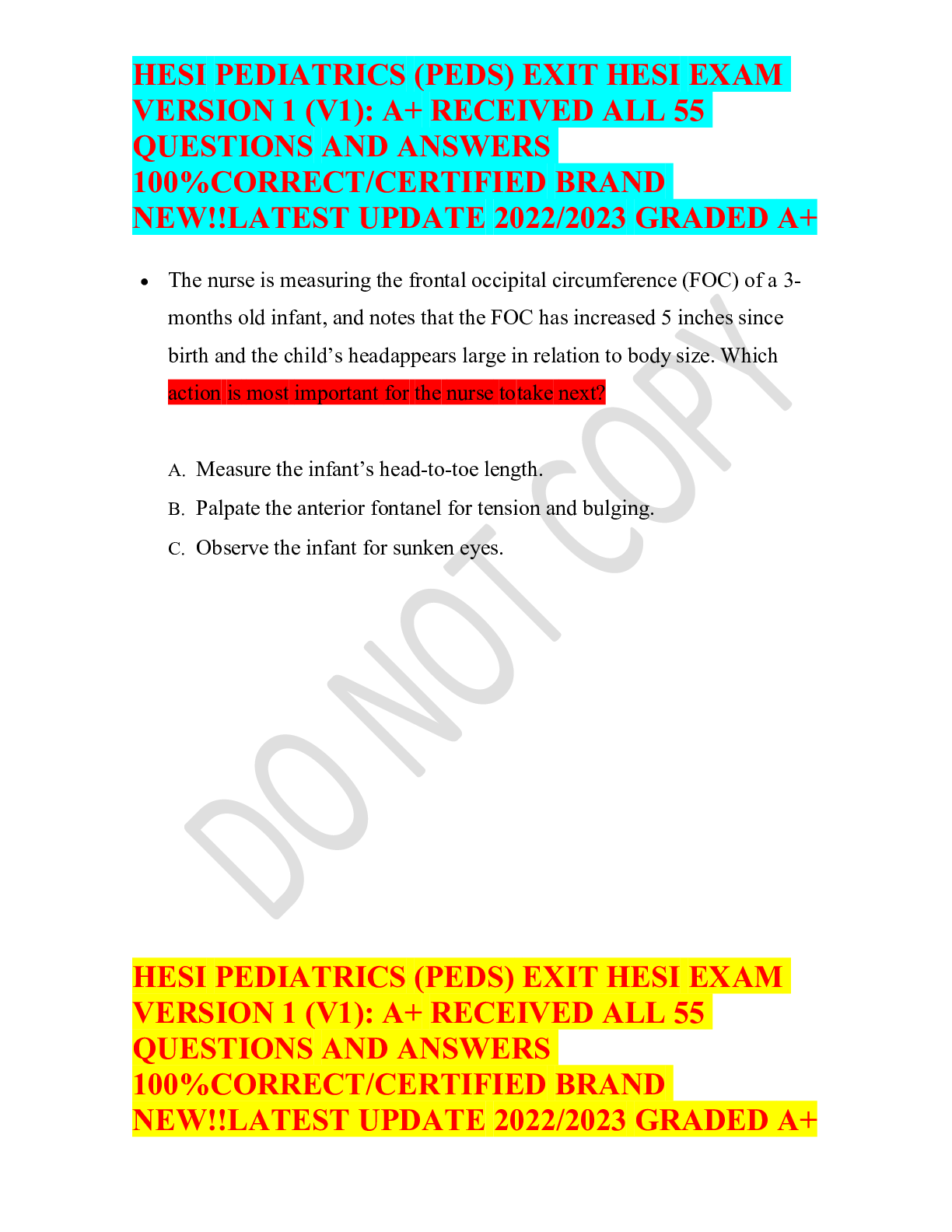HESI COMPREHENSIVE PREDICTOR EXAM
Document Content and Description Below
HESI COMPREHENSIVE PREDICTOR EXAM 1. A nurse is providing hygiene care to a bariatric patient using chlorhexidine gluconate (CHG) wipes. Which actions will the nurse take? (Select all that apply.) ... a. Do not rinse. b. Clean under breasts. c. Inform that the skin will feel sticky. d. Dry thoroughly between skin folds. e. Use two wipes for each area of the body. ANS: A, B, C CHG wipes are easy to use and accessible for older patients and bariatric patients, offering a no-rinse or -drying procedure. For a bariatric patient or a patient who is diaphoretic, provide special attention to body areas such as beneath the woman’s breasts, in the groin, skin folds, and perineal area, where moisture collects and irritates skin surfaces. Use wipes as directed on package—one wipe per each area of the body. CHG can leave the skin feeling sticky. If patients complain about its use, you need to explain their vulnerability to infection and how CHG helps reduce occurrence of health care–associated infection. 2. Which patients will the nurse determine are in need of perineal care? (Select all that apply.) a. A patient with rectal and genital surgical dressings b. A patient with urinary and fecal incontinence c. A circumcised male who is ambulatory d. A patient who has an indwelling catheter e. A bariatric patient 182 ANS: A, B, D, E Patients most in need of perineal care include those at greatest risk for acquiring an infection (e.g., uncircumcised males, patients who have indwelling urinary catheters, or those who are recovering from rectal or genital surgery or childbirth). A patient with urinary and bowel incontinence needs perineal cleaning with each episode of soiling. Bariatric patients need special attention to body areas such as skin folds and the perineal area. In addition, women who are having a menstrual period require perineal care. Circumcised males are not at high risk for acquiring infection, and ambulatory patients can usually provide perineal self-care. 3. The patient must stay in bed for a bed change. Which actions will the nurse implement? (Select all that apply.) a. Apply sterile gloves. b. Keep soiled linen close to uniform. c. Advise patient will feel a lump when rolling over. d. Turn clean pillowcase inside out over the hand holding it. Make a modified mitered corner with sheet, blanket, and spread. ANS: C, D, E When making an occupied bed, advise patients they will feel a lump when turning, turn clean pillowcase inside out, and make a modified mitered corner. Clean gloves are used. Keep soiled linen away from uniform. 1. The nurse is working on a medical-surgical unit that has been participating in a research project associated with pressure ulcers. Which risk factor will the nurse assess for that predisposes a patient to pressure ulcer development? a. Decreased level of consciousness b. Adequate dietary intake c. Shortness of breath d. Muscular pain 183 ANS: A Patients who are confused or disoriented or who have changing levels of consciousness are unable to protect themselves. The patient may feel the pressure but may not understand what to do to relieve the discomfort or to communicate that he or she is feeling discomfort. Impaired sensory perception, impaired mobility, shear, friction, and moisture are other predisposing factors. Shortness of breath, muscular pain, and an adequate dietary intake are not included among the predisposing factors. 2. The nurse is caring for a patient who was involved in an automobile accident 2 weeks ago. The patient sustained a head injury and is unconscious. Which priorityelement will the nurse consider when planning care to decrease the development of a decubitus ulcer? a. Resistance b. Pressure c. Weight d. Stress ANS: B Pressure is the main element that causes pressure ulcers. Three pressure-related factors contribute to pressure ulcer development: pressure intensity, pressure duration, and tissue tolerance. When the intensity of the pressure exerted on the capillary exceeds 15 to 32 mm Hg, this occludes the vessel, causing ischemic injury to the tissues it normally feeds. High pressure over a short time and low pressure over a long time cause skin breakdown. Resistance, stress, and weight are not the priority causes of pressure ulcers. 3. Which nursing observation will indicate the patient is at risk for pressure ulcer formation? a. The patient has fecal incontinence. b. The patient ate two thirds of breakfast. c. The patient has a raised red rash on the right shin. d. The patient’s capillary refill is less than 2 seconds. [Show More]
Last updated: 1 year ago
Preview 1 out of 14 pages
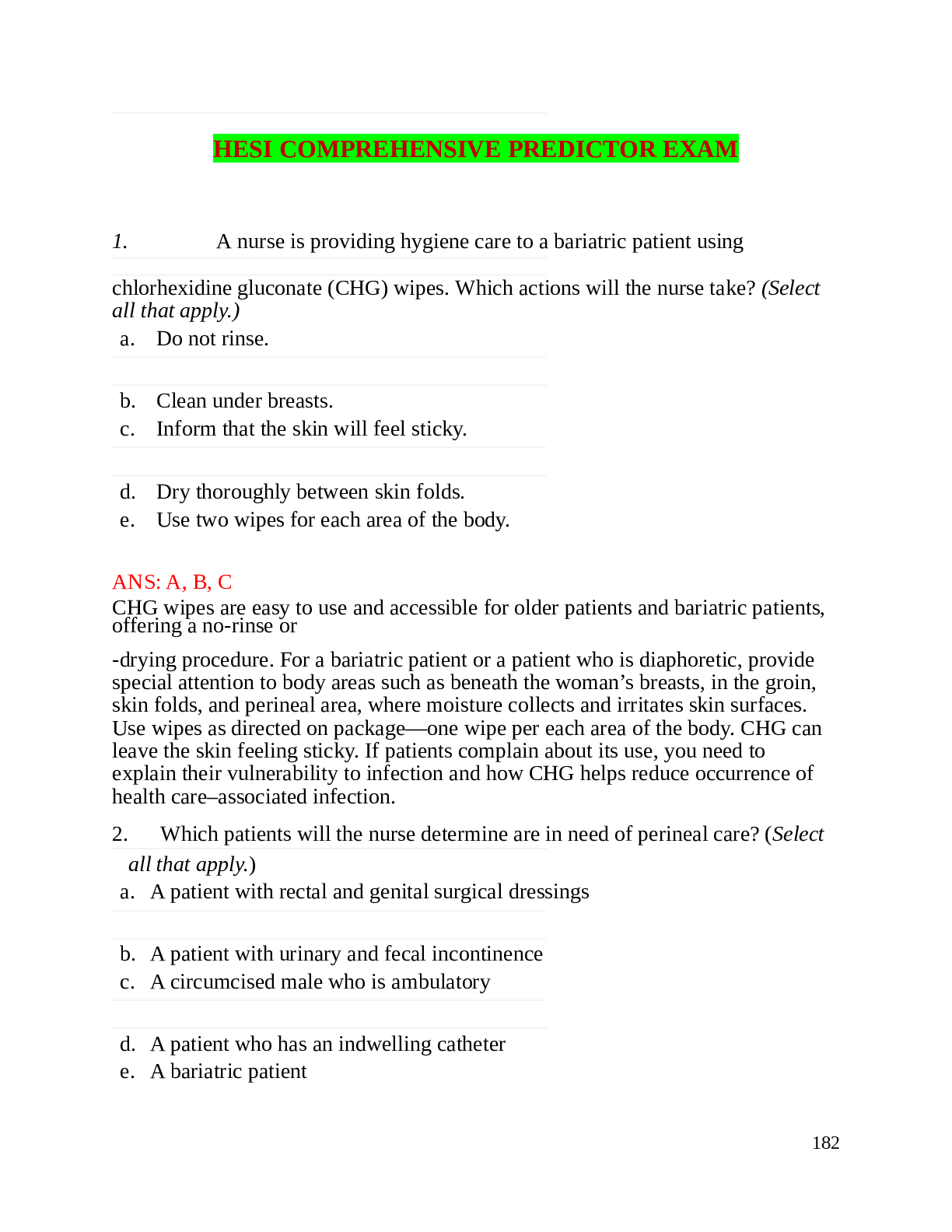
Reviews( 0 )
Document information
Connected school, study & course
About the document
Uploaded On
Jun 28, 2022
Number of pages
14
Written in
Additional information
This document has been written for:
Uploaded
Jun 28, 2022
Downloads
0
Views
28


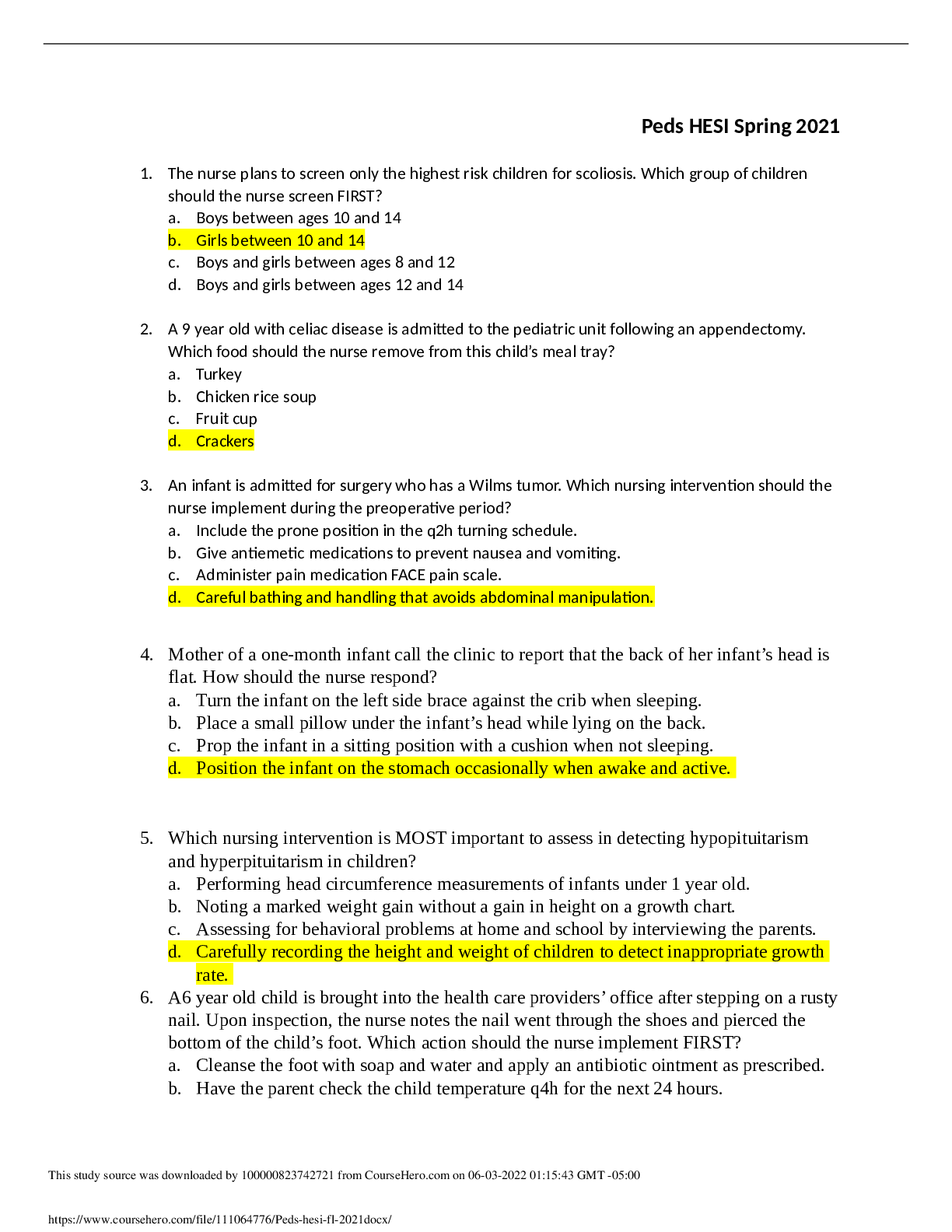
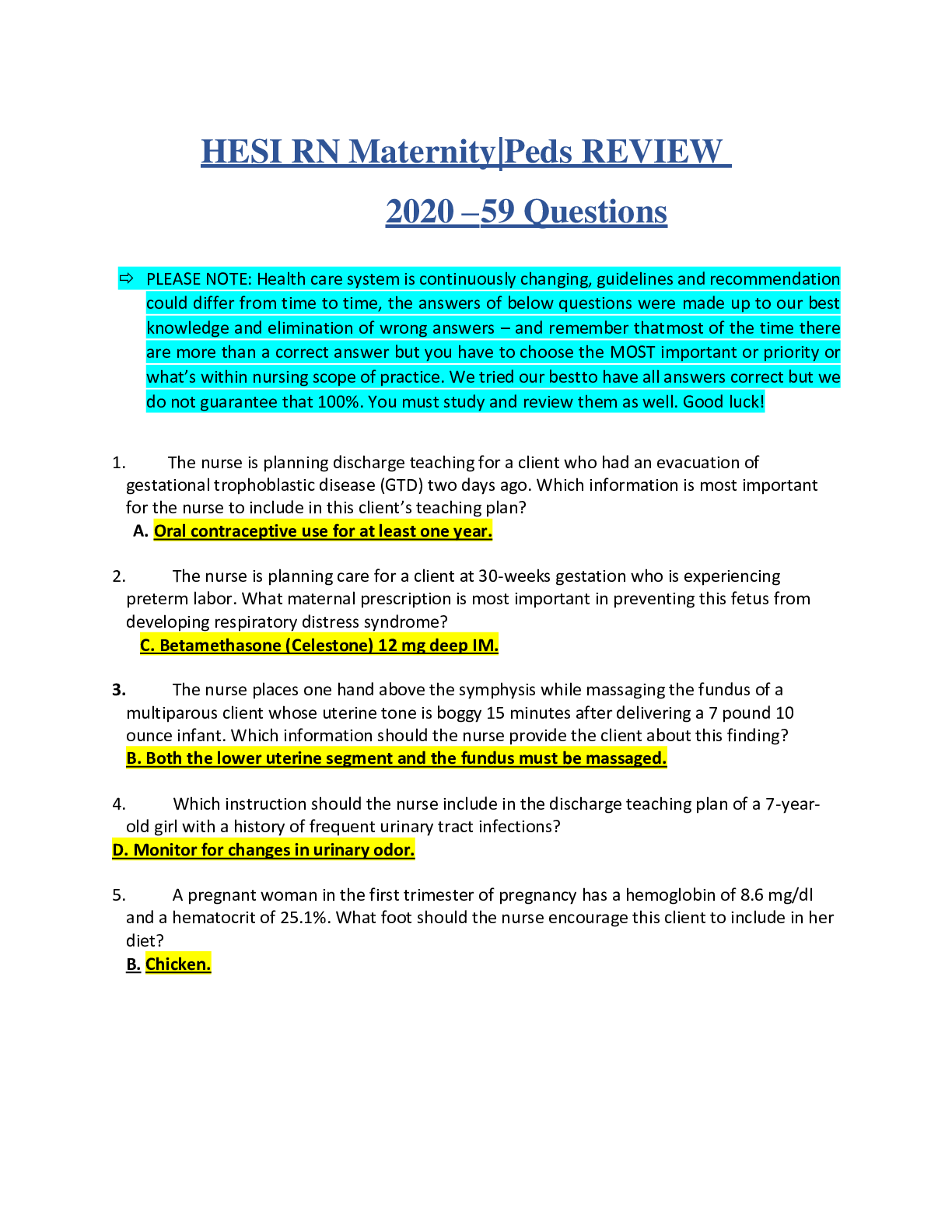
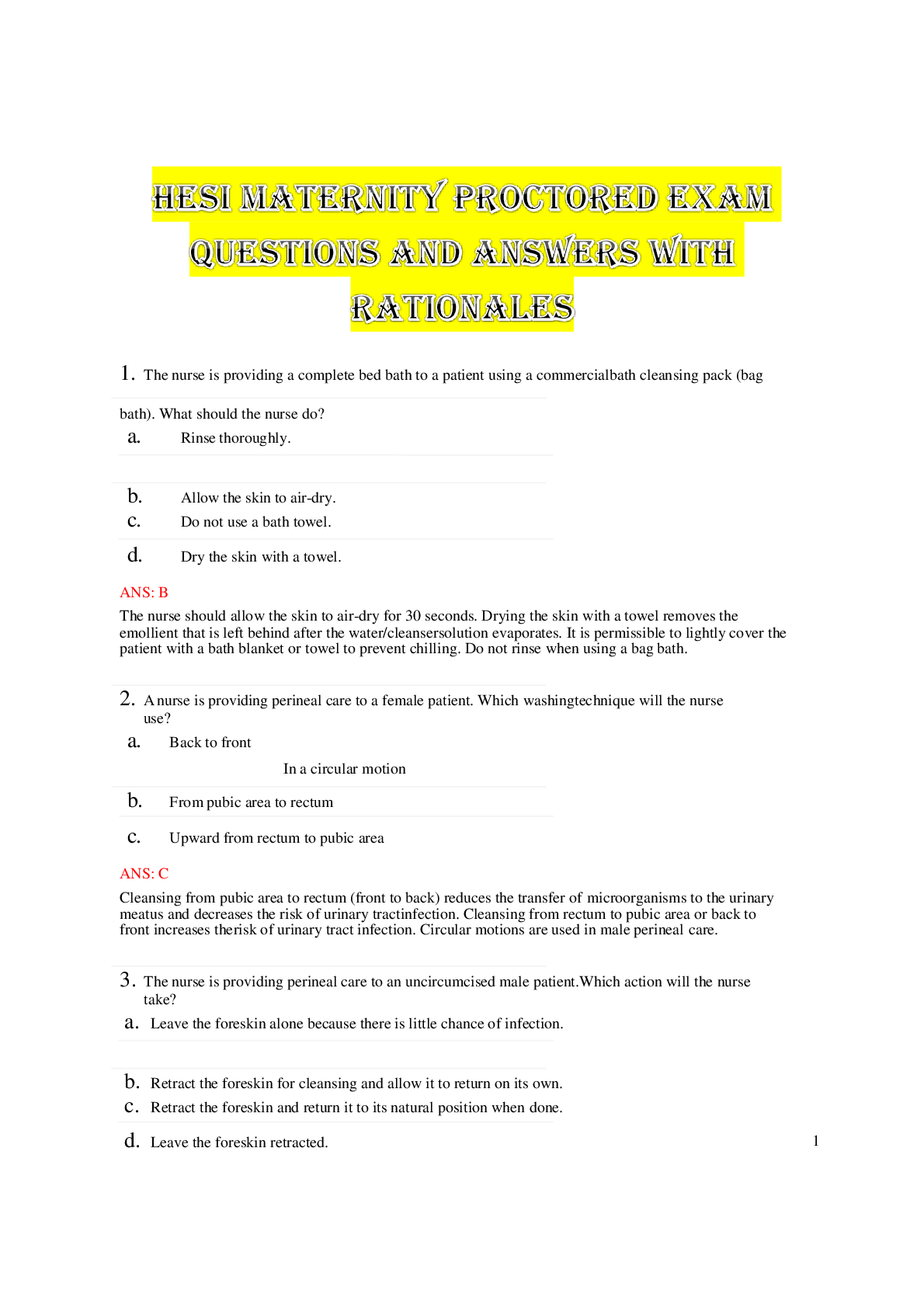
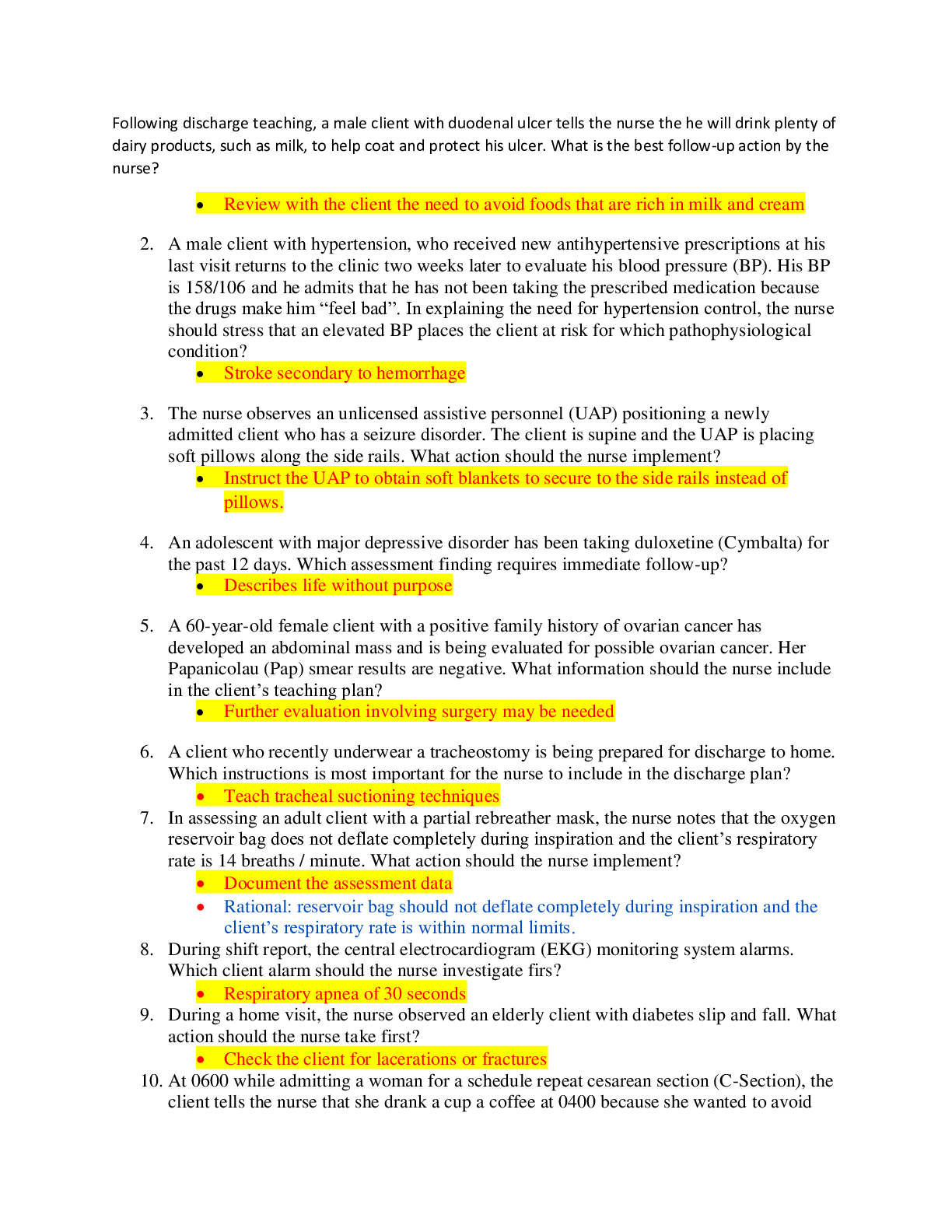
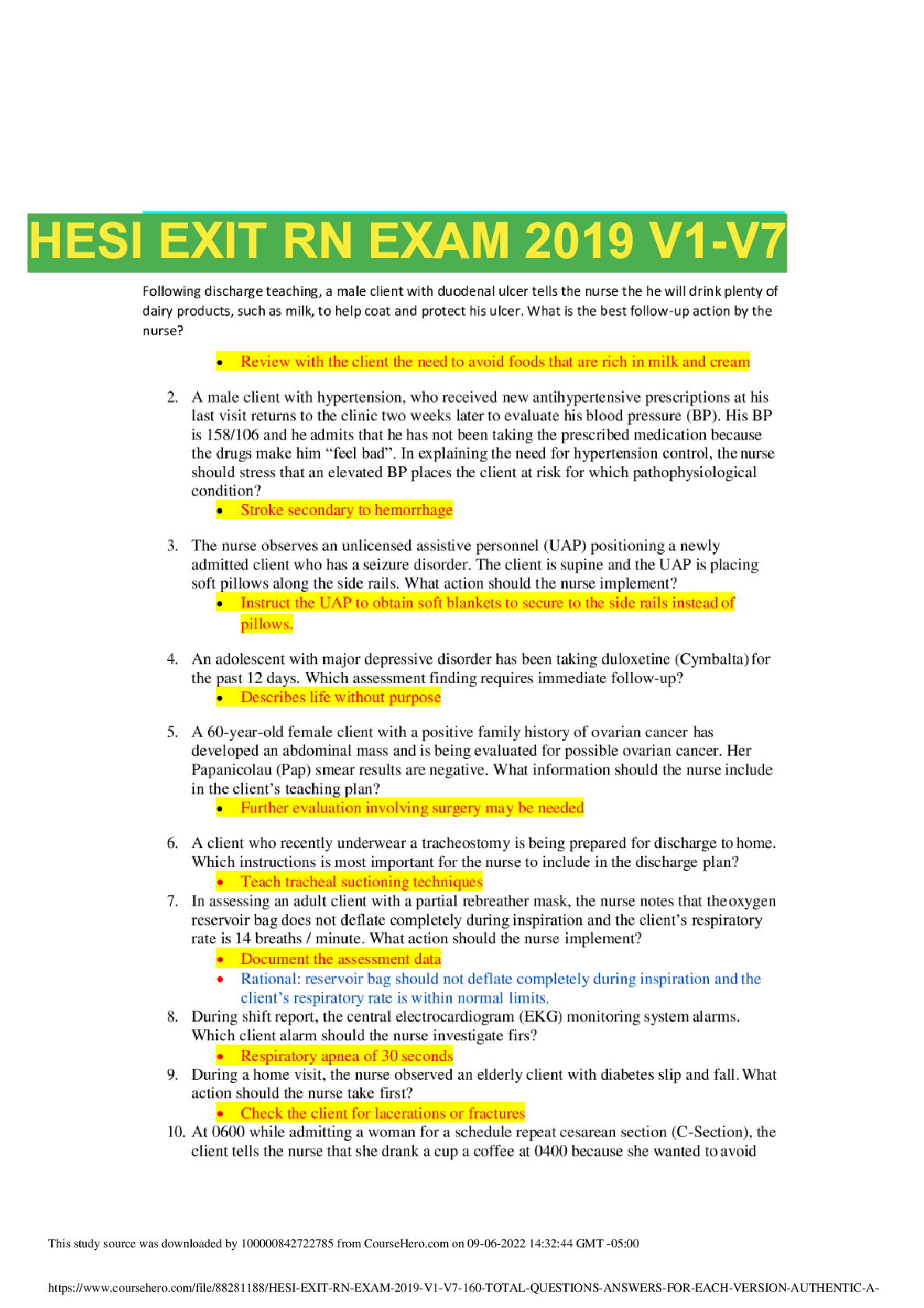



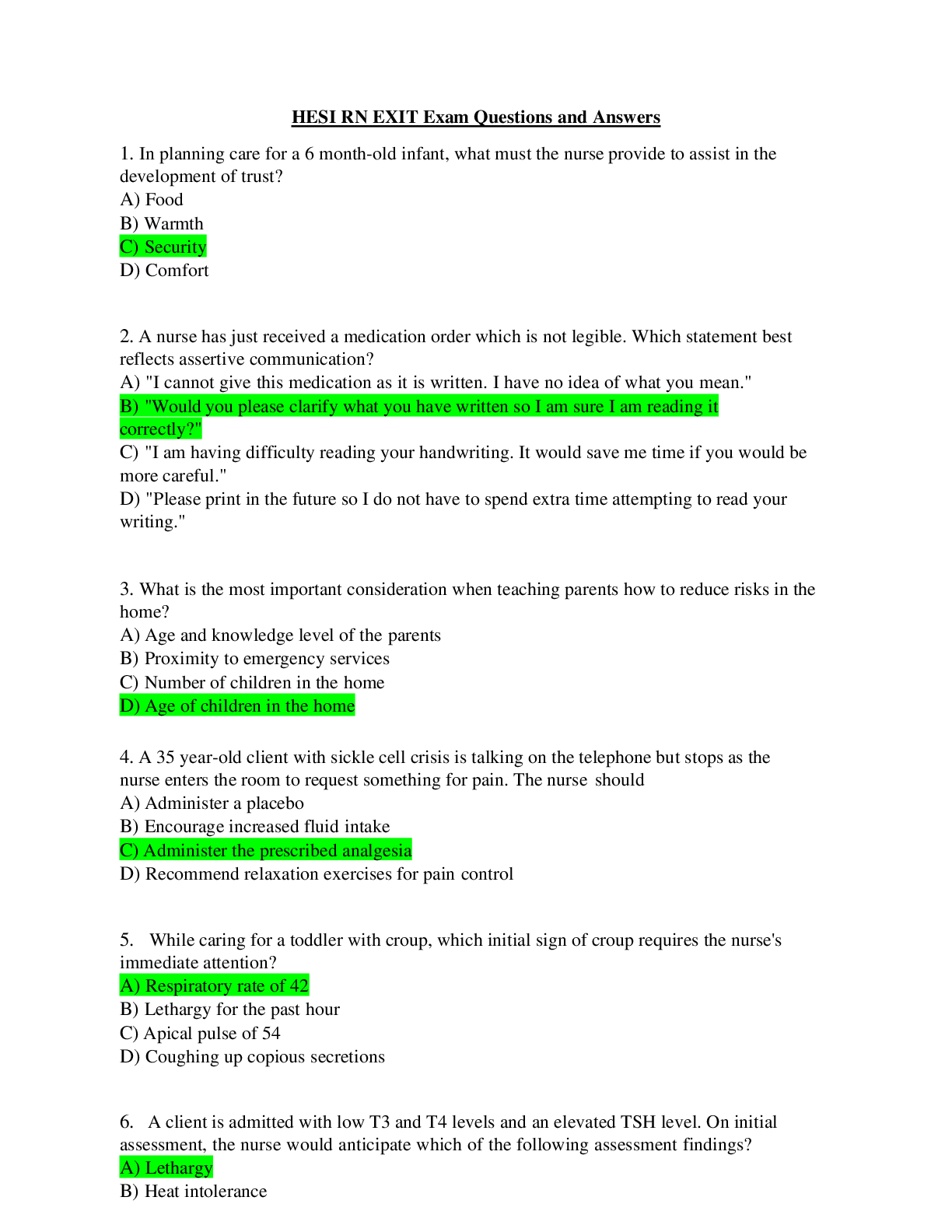








 (1).png)



